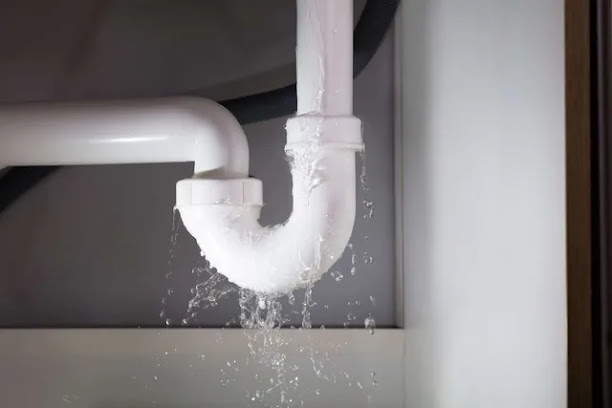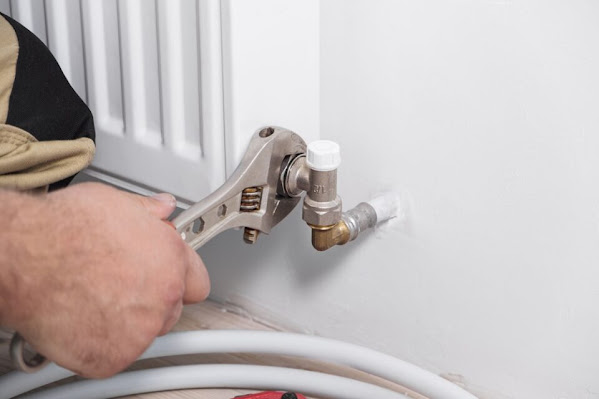Water Leaking from Under the Bathtub
Water Leaking from Under the Bathtub: Possible Causes and Solutions
Leaks are most common in the bathroom because of all the plumbing fixtures there, with the bathtub being the most vulnerable. Until mould grows or water leaks from the ceiling under the bathroom, most people are unaware that the tub is leaking. You've come to the correct place if you find yourself in this circumstance.
Additionally, if you've been living in an older home and are curious about where the leak is coming from, continue reading to find out the reasons why water leaks under bathtubs as well as potential fixes.
Why is the bathtub leaking from underneath?
Even if a bathtub leak starts out small, it is still important to take action. They will eventually enlarge and could cause flooding. As you are already aware, mould can grow, which is another reason you shouldn't put off the repair. Why then is there a leak underneath your bathtub?
- The first and most obvious reason—which isn't always that obvious—is that the bathtub is cracked. Even with cracks as tiny as a hairline, problems can still arise. To check, simply fill the tub with water and shut off the tap. Next, pay close attention to any areas of the water that appear to be sucked down. If a crack does show up, you can buy a repair kit and fix it yourself. On the market, there are two types: those for internal repairs and those for surface repairs. The instructions for both are self-explanatory, so putting them into practise should be simple.
- Leaky bathtub taps are the most prevalent issue that goes unnoticed since the water enters the tub without creating mould. But the area it hits might begin to corrode from the continuous dripping. The leak is usually caused by the rubber washers inside the taps. If you have an adjustable wrench and a screwdriver, you can fix the dripping tap there by yourself. It's possible, though, that the taps themselves are the issue rather than the washers, in which case you should contact a professional.
- Problems with the grout: It is quite possible that the grout shrinkage is causing the leak rather than the drainage system or the pipes. Since the tiles are constantly in contact with water, the grout may actually shrink around them. Resolving this issue is simple. The tiles must be re-gropped using a grout and silicone caulking mixture. The two combined in equal parts will form a new moisture barrier.
- Leaking bathtub overflow pipe: This pipe is situated behind the bathtub. The most frequent cause is the gasket, which dries up and cracks with age or moisture deprivation between the overflow pipe and the tub. You can do it yourself, but you'll need to do some preliminary planning.
Can a leaking bathtub be repaired and how?
Yes, depending on the circumstances, you may be able to fix the bathtub leak yourself. Identifying the source of the leak is crucial for correct repair and to prevent further damage to already-good materials. The most frequent causes of bathtub leaks are the first two, which you can easily fix on your own.
How to repair water leaking from bathtub drain
Replace the bathtub drain if you live in a two-story house and you see water leaking from the ceiling beneath the bathtub. It's inexpensive and simple to perform this repair, but you'll need a few things:
- Tub drain remover wrench.
- A flathead screwdriver.
- Plumber’s putty.
- A new drain if the old one is broken. It’s possible that it’s not, and instead, the seal needs replacing.
- Vacuum cleaner.
And this is how to repair water leaking from the bathtub drain:
- Place the tub wrench in the drain. The tool has two ends for different drain sizes; choose the one that fits snugly.
- Put the screwdriver in the little hole in the tool for extra leverage and turn the tool left to loosen the drain.
- Remove the drain.
- Scrape off the old plumber’s putty from the hole using the flathead screwdriver. Afterwards, vacuum the area to remove even the tiniest of pieces.
- Remove the gasket from between the bathtub and the drain spout. If it’s in good shape, clean it and put it back in. If it’s cracked, replace it.
- Put the clean or new gasket inside the hole in the tub and be careful so that it won’t fall in.
- Get a little ball of plumber’s putty and roll it, so it resembles a fat piece of spaghetti.
- Roll the putty around the drain and do it gently.
- Screw the drain back into the hole. Start by hand until you can’t anymore. Then put the tub drain wrench and tighten it fully.
- Remove the excess putty once the drain squeezes it out.
- Let the putty dry for about 24 hours.
- Close the drain and run some water over it. This is to test for any potential leaks. If you see no bubbles, then you’re good to go.
Fixing a leaking bathtub overflow pipe
Every washbasin and bathtub has an overflow tube, which prevents flooding. Its function is to channel the water back into the drain pipes if it reaches a certain level, preventing the water from rising above that point. Over time, the tub's fittings may come loose, allowing some water to leak out and drip underneath.
Here's how to determine whether the leak beneath your bathtub is, in fact, coming from the overflow pipe.
- Find your access wall panel. It’s usually on the backside of the plumbing wall of your bathtub or shower.
- Remove the access wall panel.
- Look for water dripping from the plumbing. If there is non, look inside to see if water is pooling behind the wall. Puddles are signs that you likely have leaks around the drain pipe or supply line.
- Run the shower and splash water on the tub taps.
- Check behind the access panel again. If there’s no water there, then it’s likely that your overflow pipe is the problem.
This is how to fix the tub overflow drain:
- Unscrew the overflow cover plate. There may be a bracket underneath it, so unscrew that as well.
- Pull out the overflow drain assembly along with the plug.
- Inspect the assembly and the gasket. It is possible parts of the overflow drain are loose, corroded or clogged; however, usually, the culprit an old, dry gasket.
- Remove the old gasket from the pipe flange. You might be able to do it by hand, but if it’s too hard, you might have to use needle-nose pliers.
- Clean the exposed flange with rubbing alcohol.
- Insert a new gasket in the old one’s place.
- Position the gasket in such a way that the thicker side is at the bottom. Work it into place around the overflow assembly opening. It needs to be secure around the flange.
- Reattach the overflow cover plate.




Comments
Post a Comment